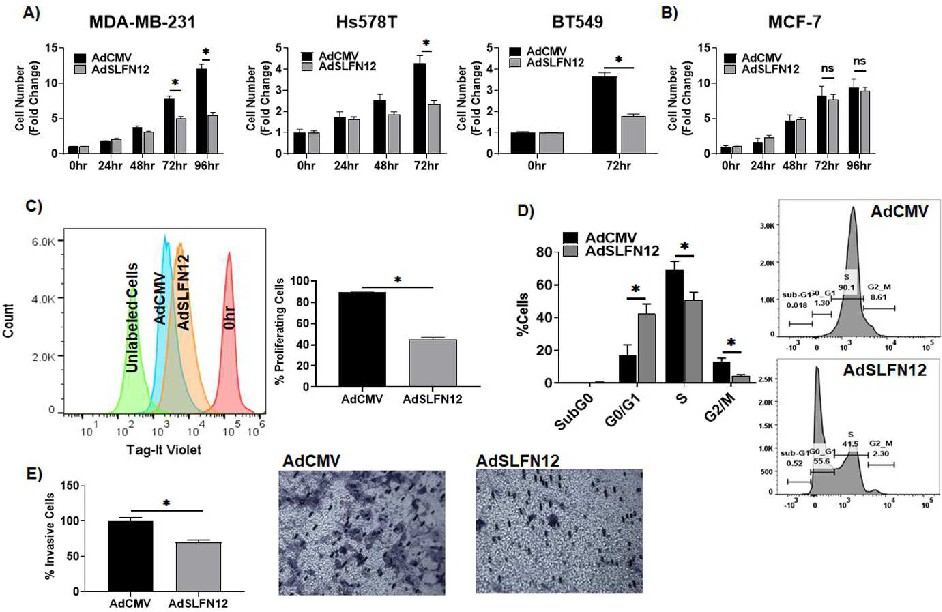Fig. 2. Schlafen12 reduces aggressiveness in triple negative breast cancer cells. A) Exogenous Schlafen12 expression using adenoviral vector (AdSLFN12) significantly reduced proliferation at 72 hours post AdSLFN12 treatment in MDA-MB-231 (n=13, *p<0.05), BT549 (n=14, *p<0.05), and Hs578T cells (n=3, *p<0.05) vs. empty vector (AdCMV) treatment. Data represent mean fold change in cell number normalized to zero-hour time point. B) AdSLFN12 treatment did not reduce the proliferation of MCF-7 cells vs. AdCMV treatment, data represent fold change in cell number normalized to zero-hour time point (n=6, ns=not significant). C) Representative histogram shows AdSLFN12 reduced the proliferation of MDA-MB-231 cells; analyzed by flow cytometry using Tag-IT Violet proliferation and cell tracking dye, the higher fluorescence intensity in the histogram indicates less proliferation (n=3, *p<0.01). D) Cell cycle analysis by flow cytometry using Vybrant DyeCycle of MDA-MB-231 cells in the presence of AdSLFN12 or AdCMV. Cells were synchronized at G0/G1 phase by serum starvation, and results represent data 72 hours after treatment (n=3, *p<0.05). E) Colorimetric invasion assay shows that AdSLFN12 treatment inhibited the invasion of MDA-MB-231 cells after 72 hours. Data represent the percentage of change in optical density normalized to AdCMV treatment (n=6, *p<0.05). All error bars shown represent standard error of mean.
